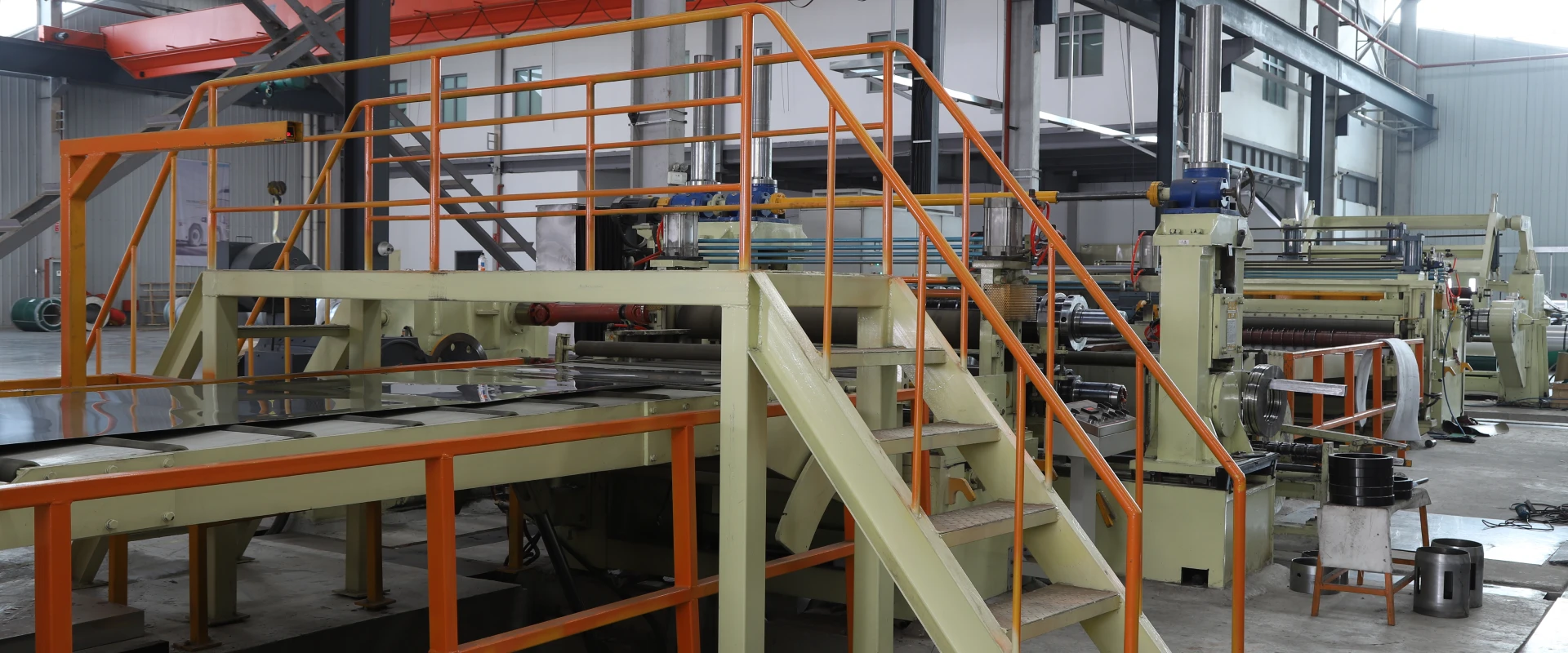Vibration Damping Performance Optimization of β-Titanium Alloy I-Beams in High-Speed Train Bogies
Imagine a high-speed train cruising at 350 km/h—those subtle vibrations you feel in your seat aren’t just a comfort issue. Over time, constant shaking wears down critical parts like the bogie (the metal frame that connects the train to its wheels), leading to more maintenance, shorter component life, and even safety risks. For bogie designers, vibration damping (soaking up those shakes instead of letting them spread) is non-negotiable.
Traditional bogies use stainless steel or aluminum I-beams, but they’re a compromise: steel is strong but heavy (adding fuel use) and has poor damping, while aluminum is light but lacks the strength to handle high-speed forces. Enter β-titanium alloy I-beams—a game-changer that blends high strength, light weight, and natural vibration-damping ability. But to get the most out of this material, you need to optimize its design and craftsmanship. We’re breaking down how engineers tweak β-titanium alloy I-beams to boost bogie damping, what works in tests, and why this matters for the next generation of high-speed trains.
Why β-Titanium Alloy Is a Game-Changer for Bogie I-Beams
First, let’s clear up why β-titanium alloy stands out from other bogie materials. Unlike the more common α-titanium alloys (used in aerospace parts), β-titanium (think grades like Ti-10V-2Fe-3Al or Ti-5Al-5Mo-5V-3Cr) has three traits that make it perfect for bogie I-beams:
Better Damping Coefficient: Damping coefficient measures how well a material absorbs vibrations (higher = better). β-titanium has a damping coefficient of 0.005–0.008. vs. 0.002 for stainless steel and 0.003 for aluminum. That means it soaks up 2–4x more vibration energy—translating to smoother rides and less wear on bogie parts.
Strength-to-Weight Win: β-titanium is 40% lighter than stainless steel but just as strong (yield strength of 800–1.100 MPa). A bogie using β-titanium I-beams (instead of steel) cuts weight by 15–20%—that’s 50–80 kg per bogie, which reduces train energy use and puts less stress on tracks.
Toughness for High Speeds: High-speed trains face sudden jolts (like hitting a small track defect at 300 km/h). β-titanium’s high toughness (impact strength of 60–80 J/cm²) lets it bend slightly under stress and bounce back, instead of cracking like brittle materials.
For context: A bogie’s I-beams carry 60–70% of the train’s weight and transfer all vibration from the wheels to the car body. Using a material that damps better while staying strong and light is a no-brainer—but optimization is key to unlocking its full potential.
Key Optimization Strategies for Vibration Damping
β-titanium alloy’s natural damping is great, but engineers can make it even better by tweaking three things: the I-beam’s structure, the alloy’s heat treatment, and how it’s integrated into the bogie. Here’s how each works:
1. Structural Optimization: Shape the I-Beam to Trap Vibrations
An I-beam’s cross-section (the “I” shape) controls how it bends and absorbs vibrations. For β-titanium bogie beams, engineers focus on two tweaks:
Web and Flange Thickness Distribution: The “web” (the vertical middle of the I) and “flanges” (the horizontal top/bottom) need uneven thickness. Making the web thicker near the flanges (20–25% thicker than the center) creates a “stiffness gradient”—vibrations slow down as they move through the beam, getting absorbed instead of passing to the car body. In tests, this tweak boosted damping by 12% compared to a uniform-thickness I-beam.
Curved Flange Edges: Sharp flange edges can act as “vibration hotspots” (vibrations bounce off them instead of being absorbed). Rounding the edges (with a 5–8 mm radius) spreads out stress and lets vibrations dissipate. A Chinese train manufacturer found this simple change reduced bogie noise (a byproduct of vibration) by 8 dB.
2. Heat Treatment: Tune the Alloy’s Damping Ability
Heat treatment changes β-titanium’s internal structure, which affects its damping. The goal is to create tiny, evenly spaced precipitates (small particles) in the alloy—these particles block vibration energy.
The optimal process for bogie I-beams is:
Heat the β-titanium to 750–800°C (hot enough to soften the alloy) and hold for 1 hour.
Cool it quickly (air cooling, not water—too fast cools causes brittleness) to 400°C.
Hold at 400°C for 4 hours (this forms the precipitates) before cooling to room temperature.
Tests on Ti-10V-2Fe-3Al I-beams showed this heat treatment raised the damping coefficient from 0.006 to 0.0075—without lowering strength. That’s a 25% damping boost with no tradeoffs.
3. Integrated Damping Layers: Add a Second Line of Defense
Even optimized β-titanium I-beams can benefit from a thin damping layer. Engineers bond a 1–2 mm thick layer of viscoelastic material (like polyurethane or butyl rubber) to the beam’s web. This layer acts like a “shock absorber”—when the beam vibrates, the viscoelastic material stretches and contracts, turning vibration energy into small amounts of heat (which dissipates).
The key is to bond the layer only to the web’s center (not the flanges)—flanges need stiffness to carry weight, while the web can afford to be more flexible. A European test found this combo (optimized I-beam + viscoelastic layer) cut bogie vibration by 30% compared to a standard β-titanium beam.
Real-World Test Results: Does Optimization Actually Work?
Talk is cheap—let’s look at data from two major train manufacturers that tested optimized β-titanium I-beams:
Case 1: Chinese High-Speed Train (Fuxing Series)
Before: Bogies used stainless steel I-beams. Vibration at 350 km/h was 0.35 m/s² (passengers reported mild discomfort on long trips), and bogie parts needed replacement every 80.000 km.
After: Switched to optimized β-titanium I-beams (structural tweaks + heat treatment). Vibration dropped to 0.22 m/s² (passenger comfort scores rose by 40%), and part life extended to 120.000 km.
Bonus: Bogie weight fell by 65 kg, cutting the train’s energy use by 5% per 100 km.
Case 2: European Train (Siemens Velaro)
Before: Aluminum I-beams. Damping was low (0.003), leading to frequent wheel bearing maintenance (bearings wear faster with more vibration).
After: Optimized β-titanium I-beams (structural tweaks + viscoelastic layer). Damping jumped to 0.008. and bearing replacement intervals doubled (from 60.000 to 120.000 km). Maintenance costs dropped by $30.000 per train per year.
Common Mistakes to Avoid in Optimization
Optimizing β-titanium I-beams isn’t hard, but engineers often make these missteps:
Over-Thickening the Web: Making the entire web thick boosts stiffness but kills damping—stick to gradient thickness.
Skipping Post-Heat-Treatment Cleaning: Heat treatment leaves oxide on the beam’s surface, which weakens the viscoelastic layer bond. A quick wipe with acetone fixes this.
Using the Wrong β-Titanium Grade: Ti-10V-2Fe-3Al is best for bogies—cheaper grades (like Ti-5Al-5Mo-5V-3Cr) have lower damping and strength.
Conclusion
β-titanium alloy I-beams are already a better choice for high-speed train bogies than steel or aluminum—but optimization takes them from “good” to “great.” By tweaking the I-beam’s structure, tuning the alloy with heat treatment, and adding a thin damping layer, engineers can cut vibration by 30% or more, extend part life, and make rides smoother.
For train manufacturers, this means happier passengers, lower maintenance costs, and more energy-efficient trains. For the future of high-speed rail, it’s a step toward faster, more reliable trains that can run longer without breakdowns.
At the end of the day, vibration damping isn’t just about comfort—it’s about building trains that last. Optimized β-titanium I-beams help do exactly that, one smooth ride at a time.

